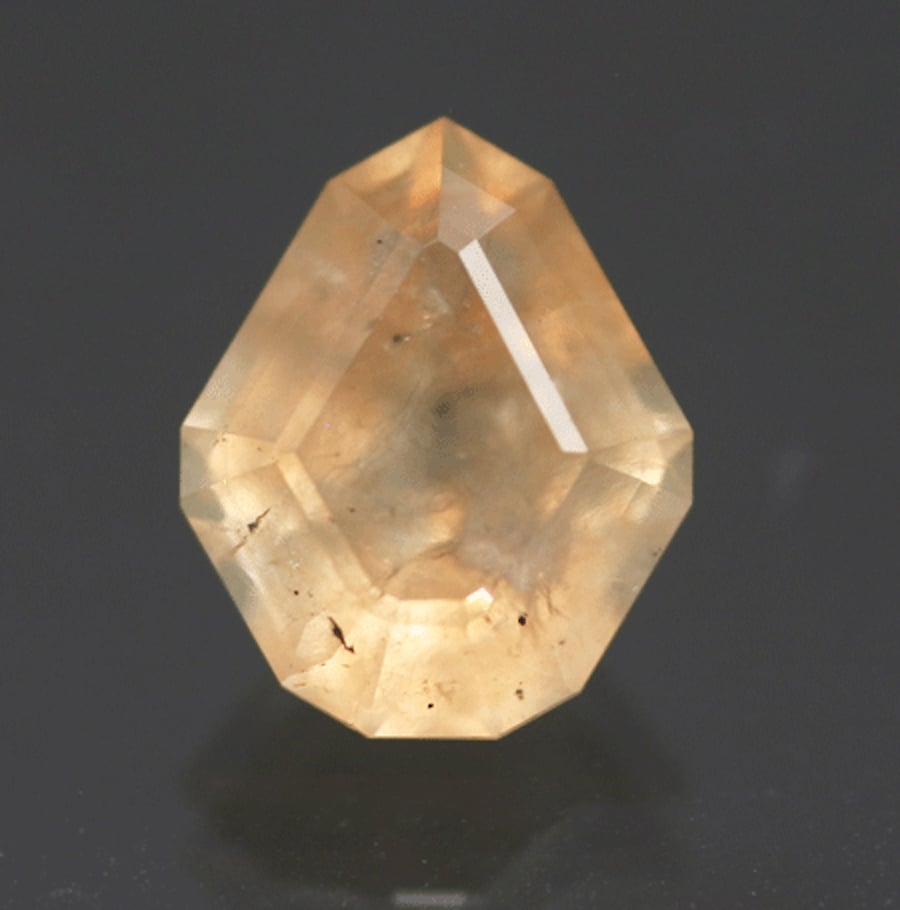Willemite Value, Price, and Jewelry Information
Willemite is prized for its intense green fluorescence. Too fragile for jewelry use, faceted specimens are extremely rare.
2 Minute Read
Willemite is prized for its intense green fluorescence. Too fragile for jewelry use, faceted specimens are extremely rare.
Start an IGS Membership today
for full access to our price guide (updated monthly).Willemite Value
What is Willemite?
Willemite belongs to the phenakite mineral group as the zinc (Zn) analogue to phenakite itself. In fact, willemite has been used as a zinc ore.
Does Willemite Make a Good Jewelry Stone?
Soft, fragile, and difficult to polish, willemites don't make good jewelry stones. You're more likely to find any faceted or cabbed gems in mineral collections than jewelry collections. Nevertheless, their striking fluorescence may make them interesting conversation pieces if worn as jewelry. Since willemites have a hardness of only 5.5, place them in protective settings to protect them from scratches.
Most faceted willemites show pale green, yellow-orange, or brownish green colors. Rarely, Quebec and Namibia produce blue material.
New Jersey is a well-known source of material for attractive crystal displays and cabochons, including cabs made from troostite, a brown manganese (Mn)-bearing willemite variety.
Some willemites may display a weak cat's eye effect.
Willemite Fluorescence
Willemites usually have intense green to yellow-green fluorescence under both shortwave (SW) and longwave (LW) ultraviolet light. Sometimes, they also show intense green phosphorescence. Very rarely, non-fluorescent willemites may occur. Other less common fluorescent colors for willemite have also been reported, such as yellow, brown, white, pink and orange, and blue-white.
The sea-foam green willemites on this calcite and plancheite matrix fluoresce an intense blue under UV light. (Calcite fluoresces orange-red; plancheite is non-fluorescent). Tsumeb Mine, Tsumeb, Namibia, 5.1 x 3.3 x 3.0 cm. © Rob Lavinsky, mineralauctions.com. Used with permission.
New Jersey produces specimens that combine willemite, black franklinite, and natural red zincite in white calcite. When viewed under ultraviolet light, these minerals produce quite a combination of vivid luminescent colors and dark inert areas.
A cherry-red zincite crystal on a matrix of calcite, willemite, and franklinite. Under UV light, the zincite and black franklinite are inert, while the calcite fluoresces reddish orange and the willemite bright green. 3.1 x 1.9 x 1.5 cm, Sterling Hill, Ogdensburg, Franklin Mining District, Sussex Co., New Jersey, USA. © Rob Lavinsky, www.iRocks.com. Used with permission.
Are There Any Synthetic Willemites?
Scientists have synthesized willemite for research into various subjects, especially its luminescence. In the early years of fluorescent lighting, manufacturers used synthetic willemite as a phosphor coating for fluorescent tubes. However, there's no known jewelry use for this lab-created material.
There are no known gem treatments or enhancements for willemites.
Where are Willemites Found?
The foremost occurrences of willemite are in Franklin and Sterling Hill, New Jersey. These sites produce stubby green crystals and greenish orange masses to several inches in length, as well as massive troostite material and crystals up to 6 inches long.
A large troostite crystal on a calcite matrix, under white and UV light. 14.0 x 13.0 x 11.0 cm, Franklin, Sussex County, New Jersey, USA. © Rob Lavinsky, www.iRocks.com. Used with permission.
Mt. Ste. Hilaire, Quebec produces blue, gemmy crystals.
Tsumeb, Namibia also produces facetable crystals as well as masses.
Other notable sources include the following:
- United States: Arizona; Inyo County, California ; New Mexico; Utah. (Micro-crystals at various localities).
- Algeria; Belgium, Democratic Republic of the Congo; Greenland; Mexico; Zambia.
Stone Sizes
Gem cutters have faceted willemites up to about 10 carats in size, mostly from the Franklin, New Jersey occurrence. Cabochons to several inches are also frequently cut from massive Franklin material.
- Smithsonian Institution (Washington, DC): 11.7 and 11.1 (yellow-orange, Franklin, New Jersey).
- National Museums of Canada (Ottawa, Ontario): 6.75, 0.30 (light blue, Quebec).
- Private Collection: 5.39 (pastel orange, New Jersey).
How to Care for Willemites
Use a soft brush, mild detergent, and warm water for cleaning willemites. Consult our gemstone jewelry care guide for more recommendations.
Joel E. Arem, Ph.D., FGA
Dr. Joel E. Arem has more than 60 years of experience in the world of gems and minerals. After obtaining his Ph.D. in Mineralogy from Harvard University, he has published numerous books that are still among the most widely used references and guidebooks on crystals, gems and minerals in the world.
Co-founder and President of numerous organizations, Dr. Arem has enjoyed a lifelong career in mineralogy and gemology. He has been a Smithsonian scientist and Curator, a consultant to many well-known companies and institutions, and a prolific author and speaker. Although his main activities have been as a gem cutter and dealer, his focus has always been education. joelarem.com
International Gem Society
Related Articles
Black Diamond Value, Price, and Jewelry Information
Chameleon Diamond Value, Price, and Jewelry Information
Gray Diamond Value, Price, and Jewelry Information
Green Diamond Value, Price, and Jewelry Information
Latest Articles
800 Years of Mogok: A Celebration in Tenuous Times
What is the Average Gemstone Faceting Yield?
Pyroxmangite Value, Price, and Jewelry Information
How to Identify Emerald Simulants and Synthetics
Never Stop Learning
When you join the IGS community, you get trusted diamond & gemstone information when you need it.
Get Gemology Insights
Get started with the International Gem Society’s free guide to gemstone identification. Join our weekly newsletter & get a free copy of the Gem ID Checklist!
